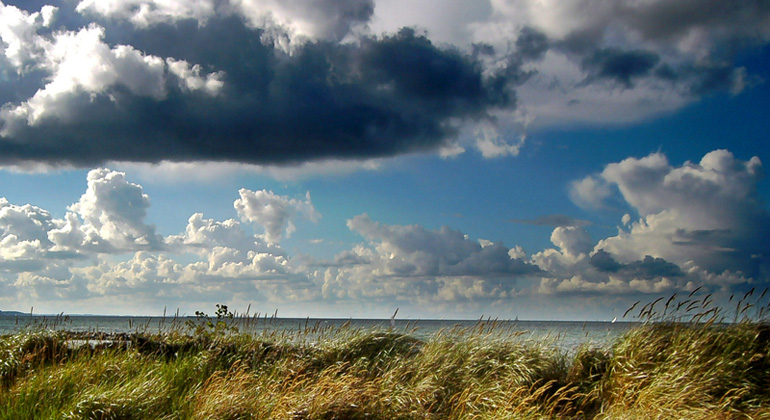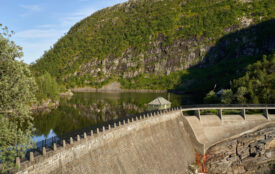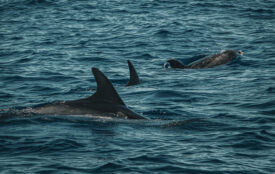Season ́s greetings from the Nort h Sea turned out to be the third largest salt water inflow since beginning of oceanographic observations in the Baltic Sea
From December 13 to 26, 2014, the Baltic Sea faced a very rare phenomenon being of high importance for its ecosystem: for seve ral days oxygen rich saltwater from the North Sea flowed into the Baltic Sea.
After all measured data of the time in question are evaluated, the Warnemünde oceanographers conclude that it turned out to be the largest saltwater inflow since 60 years. Among all inflows which have been detected since the beginning of oceanographic measurements in 1880, its volume of 198 km³ makes it to the third largest inflow ever observed. In total, approximately 4 giga tons of salt were thus added to the Baltic Sea. During the coming months, the IOW will investigate on a regular basis how these water masses will be further spread in the central Baltic Sea and which effect they will have. As the in flowing water showed a very good oxygen saturation, the IOW scientists assume that the so called „dead zones“ in the Bornholm and Gotland Basin with zero oxygen and toxic hydrogen sulfide in the bottom regions will largely benefit from this inflow.
This phenomenon was preceded by a period of prevailing Easterly winds causing a strong outflow with a subsequent significant lowering of the sea level and weakening the outflow. When afterwards on December 5, the wind changed to Southwest, later to West, saline North Sea water swashed in to the Baltic. As this wind situation stayed unchanged over nearly three weeks, large amounts of saltwater could enter the Baltic through the Øresund first and with a small delay also through the Belt Sea.
Real-time data from the „Early-Warning System “MARNET” enabled the scientists to be right in time on the spot. Thus, all necessary measurements could be performed to record the dimensions of this inflow. The MARNET is a network of autonomous measuring stations, operated by the Fede ral Maritime and Hydrographic Agency (BSH). Three of the five stations in the Baltic Sea are maintained by IOW. One of them is the station “Darss Sill” positioned on a submarine sill of the same name which separates the Belt Sea from the basins of the Baltic Proper. A further station is moored in the Arkona Basin, east of the Darss Sill station. Both stations are equipped with temperature and salinity sensors in different water depths. They are permanently delivering measured data per satellite to IOW and BSH, and provide an efficient survey of the water exchange between the North Sea and the Baltic Sea.
First signals indicating an inflow were transmitted from the station Arkona Basin on December 12. They prompted the Warnemünde oceanographers to change the programme of an already scheduled expedition with r/v “Elisabeth Mann Borgese” on December 15 in order to collect addition al information on the spatial distribution of the inflowing water masses.
The IOW scientists will observe the aftermaths of this inflow throughout the following year. The next expedition with r/v „Elisabeth Mann Borgese“ which will start at January 12, 2015, will be dedicated to the situation in the Bornholm Basin. The oceanographers presume that until then the inflow water will have reached the Western part of it.








